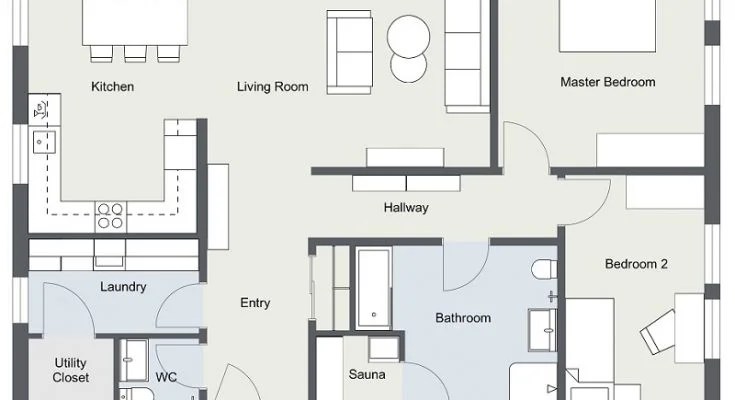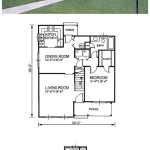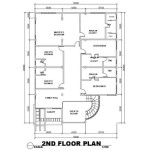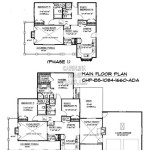How to Find the Original Floor Plans for Your House
Locating the original floor plans for a house can be an invaluable asset for homeowners. These plans provide a detailed blueprint of the property's structure, layout, and sometimes even its history. This information is essential for planning renovations, understanding the structural integrity of the building, documenting its architectural significance, and even simply satisfying curiosity about the home’s origins. Finding these plans, however, can often feel like a daunting task, requiring patience and a strategic approach. This article outlines several avenues to explore in the search for original floor plans, maximizing the chances of success.
Key Points to Consider Before You Begin
Before embarking on the search, several factors need consideration. The age of the house is a primary determinant of the availability of records. Older homes, especially those built before the mid-20th century, may have fewer documented records due to less stringent building codes and record-keeping practices. Conversely, newer homes are more likely to have accessible records in municipal archives. It is also crucial to consider the historical context of the house, including its builder, architect, and any significant past owners, as this information can guide the search process. Finally, the location of the house is important, as record-keeping practices vary significantly between jurisdictions.
The type of floor plan you are seeking is also important. Are you looking for a complete set of architectural drawings encompassing structural, electrical, and plumbing details or a more basic floor plan illustrating room layouts and dimensions? Understanding the specific information needed allows for a more targeted search strategy. Consider also the budget for the search, as some resources may require payment for access or copies of documents.
Exploring Municipal Archives and Local Government Offices
The most logical starting point for locating original floor plans is typically the local municipal archives or government offices responsible for building permits and property records. These offices often maintain extensive records of construction projects, including approved building plans. The specific titles and departments may vary depending on the location, but common places to check include the building department, planning department, county recorder's office, and city hall. These entities enforce building codes and manage construction applications, and the original plans are often submitted during the permitting process.
Contact the relevant offices and inquire about their procedures for accessing historical building records. Some municipalities may have online databases where records can be searched electronically, while others may require an in-person visit to review physical files. Be prepared to provide the property's address, legal description (if available), and any other relevant information that could help locate the records. Many jurisdictions now offer online access to scanned documents, so checking the municipality's website is a good first step. If the records are not available online, schedule an appointment to visit the archives and review the available materials.
When examining the records, be patient and thorough. Building plans may be filed under different headings, such as "building permits," "construction documents," or "property files." Look for documents that include architectural drawings, floor plans, elevations, and structural details. If the original plans are not immediately apparent, ask the archive staff for assistance. They may have valuable knowledge of the record-keeping system and be able to suggest alternative search strategies. Be aware that some historical records may be fragile and require careful handling. Follow any guidelines provided by the archive staff to ensure the preservation of these valuable documents.
Researching Historical Societies and Local Libraries
Historical societies and local libraries are valuable resources for uncovering information about the history of a house, its previous owners, and the architectural styles prevalent in the area. These organizations often maintain collections of historical photographs, maps, and documents that can provide clues about the original floor plans. While they may not possess the detailed architectural drawings submitted to the building department, they can offer valuable contextual information and potential leads.
Contact the local historical society and inquire about their archives and research services. They may have information about the builders or architects who were active in the area during the time the house was constructed. They might also have historical photographs that show the house's original appearance and any subsequent renovations. Local libraries can also be a valuable source of information. Check their local history collections for books, articles, and maps that provide details about the area's development and architectural heritage. Librarians can also assist in conducting research and locating relevant resources.
Examine historical maps and atlases of the area. These maps can show the location of the house and its surrounding properties over time. They may also indicate the original layout of the neighborhood and any changes that have occurred over the years. Look for any references to the house's builder or architect in local directories, newspapers, or other historical documents. This information can help narrow down the search and identify potential sources of floor plans. Even if the historical society or library does not have the actual floor plans, they may be able to point you towards other resources or individuals who can assist in the search.
Contacting Past Owners, Builders, and Architects
Tracing the history of previous owners or contacting the original builder or architect can be a fruitful avenue for finding floor plans. Previous owners may have retained copies of the original plans from when they purchased the house. Similarly, the builder or architect may have copies in their archives or be able to provide information about where the plans might be located. This approach requires some detective work and may involve researching property records, census data, and other historical documents to identify potential contacts.
Begin by researching the property's ownership history. County recorder's offices or online property databases can provide information about past owners and their contact information. Once you have identified potential contacts, reach out to them and explain your search for the original floor plans. They may be willing to share any documents they have or provide leads to other potential sources. If you know the name of the original builder or architect, try to locate their firm or descendants. They may have records of the house's construction or be able to provide information about where the plans might be archived. Even if the original firm is no longer in business, their records may have been transferred to another firm or archive.
When contacting potential sources, be polite, respectful, and clear about your intentions. Explain why you are seeking the floor plans and how they will be used. Offer to compensate them for their time and effort if necessary. Be prepared to provide them with information about the house and its history to help them recall any relevant details. Even if they do not have the actual floor plans, they may be able to provide valuable insights into the house's construction and design. This method can require considerable time and effort, but it can be particularly rewarding if it leads to the discovery of the original floor plans.
Exploring Online Resources and Databases
The internet offers a wealth of resources for researching historical properties and locating potential sources of floor plans. Online databases, historical archives, and genealogy websites can provide access to a vast collection of documents, photographs, and maps that can aid in the search. These resources can be particularly useful for researching houses that have been documented or studied due to their architectural significance or historical importance.
Utilize online databases such as Ancestry.com, FamilySearch, and Newspapers.com to research the house's previous owners and any relevant historical events. These databases can provide access to census records, property records, newspaper articles, and other documents that can shed light on the house's history. Search architectural archives and online repositories for architectural drawings and historical photographs. Many universities and museums maintain digital collections of architectural documents that may include floor plans for houses in specific regions or architectural styles. Explore online forums and communities dedicated to historical preservation and architecture. These forums can be a valuable source of knowledge and advice from experts and enthusiasts who may have encountered similar challenges in their research.
When using online resources, be aware of the reliability and accuracy of the information. Verify the sources of the data and cross-reference information from multiple sources to ensure its validity. Be cautious of websites that offer to provide floor plans for a fee, as these services may not always be legitimate. Always prioritize reputable sources, such as government archives, historical societies, and academic institutions. By leveraging the power of the internet, researchers can greatly enhance their chances of finding valuable clues and resources that can lead to the discovery of the original floor plans.
Engaging Professional Researchers and Genealogists
If the search for original floor plans proves to be particularly challenging, consider enlisting the help of professional researchers or genealogists. These professionals have specialized skills and experience in locating historical documents and tracing property records. They can conduct in-depth research in archives, libraries, and other repositories, and they can often uncover information that would be difficult for a non-professional to find.
Research and identify qualified researchers or genealogists who specialize in historical property research. Look for professionals who have experience working with local archives and who have a proven track record of success. Check their credentials, references, and client testimonials to ensure that they are reputable and reliable. Clearly communicate the goals of the research and the specific information that is being sought. Provide them with as much information as possible about the house, its history, and any previous research that has been conducted. Establish a clear budget and timeline for the research. Understand the fees that will be charged and the expected deliverables. A professional researcher can provide invaluable assistance in navigating complex archives, interpreting historical documents, and uncovering hidden clues that can lead to the discovery of the original floor plans. They can significantly increase the chances of success and save considerable time and effort.
Before hiring a professional, discuss their research methodology and the types of resources they will utilize. Inquire about their experience with similar projects and their success rate in locating historical documents. A reputable researcher will be able to provide a realistic assessment of the chances of finding the floor plans and will be transparent about their fees and services. A well-chosen professional can be a valuable asset in the quest to uncover the history of a house and locate its original floor plans.

How To Get Blueprints Of My House Free Computer Repair Ticktocktech

How To Get Blueprints Of Your House

How To Find The Original Floor Plans For Your House

How To Read A Floor Plan And Design The Perfect Home For You

How To Read A Floor Plan And Design The Perfect Home For You

House Plans Home Floor Architecturalhouseplans Com

How To Read A Floor Plan And Design The Perfect Home For You

I Don T Understand This House Plan Corner Bar Sketchup Community

Site Plans What They Are And How To Create One

10 Best Free Floor Plan Design To Use
Related Posts








